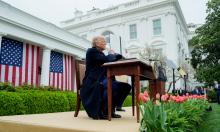The wisdom of Tarot Cards was created for centuries
The whole of the world seems to be revealing a phenomenal interest in foretelling with Tarot card. The Tarot cards are used for game, pleasure, for readings at gatherings and in small private groups. Foretellers just intuitively interpret the Tarot symbols and thus give their clients only hints at the directions they should move. The rest of success depends upon clients themselves.

The Tarot cards first appeared in Europe in the 14th century. Some sources say they appeared supposedly about 1370. However, the origin of the cards is not yet defined exactly. Majority of researchers believe that Gypsies practicing card-reading brought them to Europe, or probably that the cards came together with knights who came back from crusades in the East.
A deck of Tarot cards includes 78 cards that fall into two basic groups: major arcana and minor arcana cards. The twenty two major arcana cards are senior. Each card has its personal number and name. 1 - The Magician, 2 – The High Priestess, 3 – Fertility, 4 – Emperor, 5 – Inspiration, 6 – Choice, 7 – Chariot, 8 – Justice, 9 – Hermit, 10 – Fortune Wheel, 11 – Strength, 12 – The Hanged Man, 13 – Death, 14 – Temperance, 15 – Devil, 16 – Tower, 17 – Star, 18 – Moon, 19 – Sun, 20 – Judgment, 21 – The World, 22 – Fool. There are 56 cards of minor arcana (these are the modern playing cards) that fall into four suits. Every suit has 14 cards: ten pip cards in the four suits (Wands, Cups, Swords, and Disks) and four costume ones. There are four honors: the Page, the Knight, the Queen, and the King.
There are many theories about the origin and usage of the Tarot cards. It is known that some outstanding figures contributed greatly into the history of the Tarot cards.
Maria-Anna-Adelaide Lenorman was born May 27, 1772 in a small town of Alanson near Paris to a family of a well-to-do textile merchant. She was educated in a Benedictine convent, and once being there she predicted that the abbess would not stay at the convent for long. Indeed, the abbess was soon moved to a new place. When the father of the family died, they grew poorer and moved to Paris. Together with a friend of hers, Maria learnt to read cards and the girls opened a salon in Rue de Turnon in 1790 that soon got incredibly popular. Maria could read cards, knew astrology, the language of colors and smells; she could tell the fortune. In 1793, well-known revolutionists Marat, Saint-Just and Robespierre visited the salon where the fortune teller said they would die a violent death. The prediction came true very soon.
On suspicion of sympathy with Jacobeans, the young fortune teller was arrested but soon released because of her popularity and influential connections. When Maria met Josephine, the wife of young general Bonaparte for the first time, she predicted that the young woman would some day wear the crown of France. The prophecy came true in ten years. Since then, both women were friends. When General Bonaparte became the emperor he once got tired of his wife’s infatuation with Maria’s prophecies and demanded that Lenorman must be exiled from Paris. Lenorman predicted that Bonaparte would be dethroned and the Bourbons would restore. However, the prophet was cautious enough and published her prophecy after the Restoration. Maria Lenorman used ordinary cards but she gave an unusual interpretation to what the cards displayed. In 1952, 104 years after Lenorman’s death, Flemish fortune-teller Erna Droesbeke came to the world. She employed memoirs of her contemporaries to reconstruct Lenorman’s system and published a really popular book Fortune-Telling With Lenorman.
In 1910, member of the Golden Dawn Masonic Order Arthur-Edward Waite together with artist Pamela Cole Smith made a deck of Tarot cards that had designs on minor arcana as well. The innovation gave designs to all cards beginning from ace to ten which made the intuitive interpretation of cards easier. This very deck of Tarot cards has been the world’s most popular for about a century. Together with other cards based on the same principle – having designs on all arcana – this deck is part of the Tarot cards that ninety percent of fortune-tellers in the world are using now.
In 1942, British Magician and philosopher Aleister Crowley, another member of the Masonic Order that was closed in 1937, together with artist Lady Frieda Harris made a new Tarot deck, The Thoth Tarot. Later, it was named after Crowley. The deck is an entire encyclopedia of occult knowledge. Its basic principle is cabbala. This deck wonderfully suits for those who want to read cards and astrology at the same time.
Translated by Maria Gousseva
Pravda.Ru
Discuss this article on Pravda.Ru English Forum
Subscribe to Pravda.Ru Telegram channel, Facebook, RSS!





